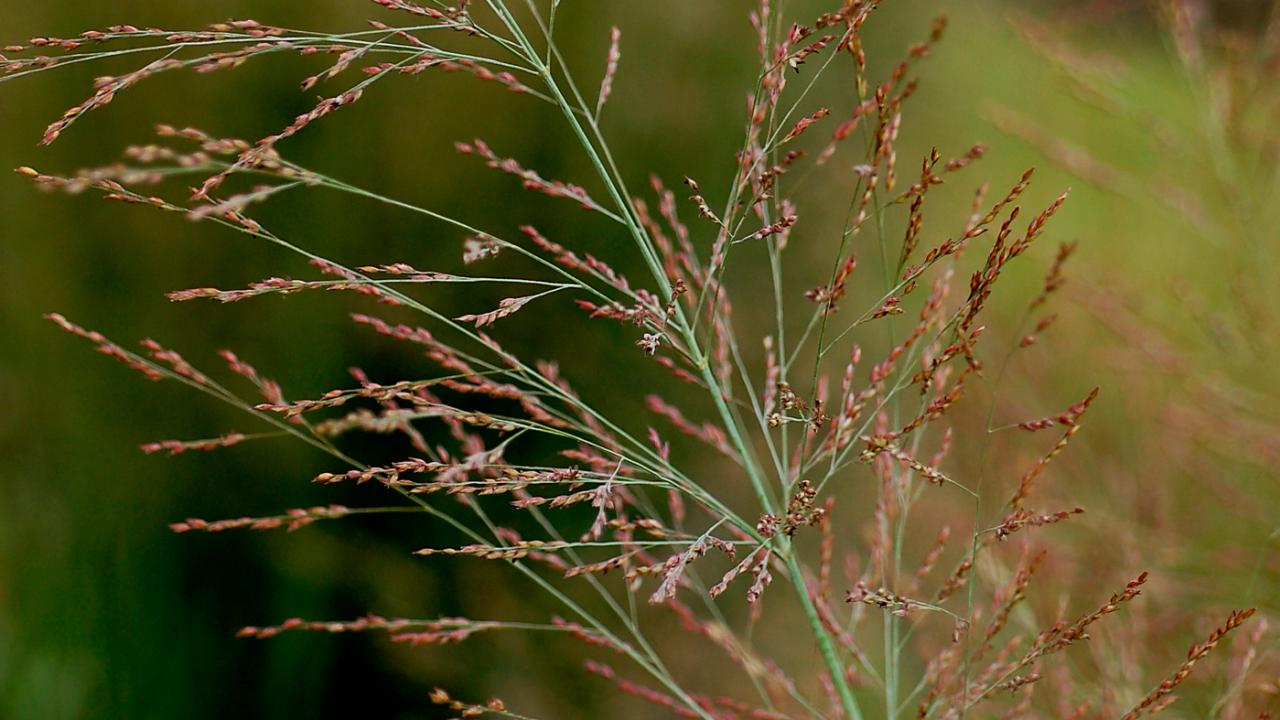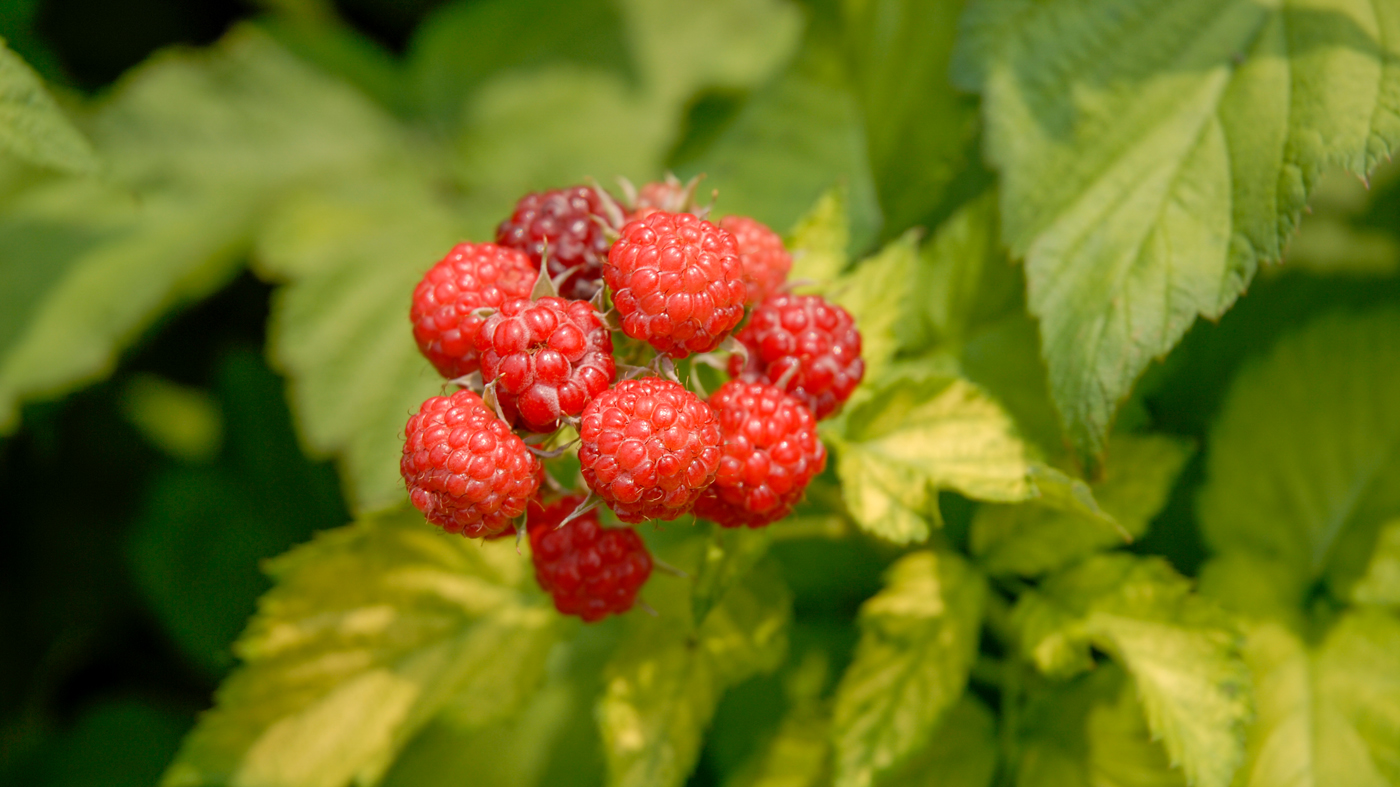

Plant Profiles
Berries and Brambles
As gardeners use the winter months for much-needed planning, they might want to consider the delicious bramble and berry plants.
Brambles
Brambles are those tasty, colorful delights of early summer and fall. The genus Rubus is divided into many species that include raspberries, blackberries, dewberries, and thimbleberries. They derive their name from their thorny or spiny canes and branches.
Raspberries (Rubus idaeus)
Raspberry bushes are either summer-bearing or everbearing. Even in Chicago, where the temperature can drop to minus 25 degrees Fahrenheit, these shrubs are still hardy; and naturalistic gardeners choose them because they are guaranteed to attract birds. Raspberries ripen in mid- to late June in northern Illinois. They like a pH of 5.5 to 6.5 and full sun, and are grown in rows with at least 3 feet between each plant. Horizontal supports are used to keep the canes in an upright position.
Raspberry fruit can be red, yellow, purple, or black. Their colors give an indication of when and how often fruit can be harvested. Though raspberries of all colors produce in the spring, the everbearing varieties produce in fall as well. 'Sodus' is a good purple form with few thorns, and 'Fall Gold' has extremely sweet yellow fruit. 'Royalty' is a sweet purple raspberry that can be eaten when it is red, but the flavor is much better when it's fully ripe. 'Jewel' is a black raspberry with large, luscious fruit, and 'Heritage' is an everbearing red raspberry with good flavor.
Pruning is essential for maximum fruit, and gardeners must know which variety they have before choosing among the different forms of pruning. Some prune their shrubs to the ground in early spring, sacrificing the summer crop for the sake of one big bumper fall crop. Raspberry bushes send up suckering stems that must be cut out immediately with a sharp spade, although the black and purple varieties are a little tidier. Those who wonder whether they have black raspberries or blackberries should check the berries as they are harvested. Raspberries pull away hollow from their stems, leaving their central receptacles attached to the plant; blackberries come away with their receptacles attached to the fruit.
Blackberries (Rubus cultivars)
Blackberries ripen much later than raspberries and can be harvested in August. They like a pH of 6 to 6.5 and full sun, and are grown in rows with 3 feet between each plant. They are often grown on a trellis or some other support, since they have a trailing habit. These plants are not reliably hardy in northern Illinois, but 'Illini' is one extremely hardy variety—it can withstand temperatures of minus 25 degrees. Developed and patented by the University of Illinois, the berry is medium size, shiny black, and has a good flavor. 'Chester' is another hardy blackberry. It is thornless, has a tart, tangy flavor, and bears fruit into late summer.
Berries
Strawberries (Fragaria x ananassa)
There are three types of strawberries available to gardeners: June-bearing, which produce one big early summer crop; everbearing, which produce one big crop followed by a smaller, later harvest; and day-neutrals, which produce berries all season long on plants that are considered annuals. The Garden suggests planting a row of June-bearing strawberries on slightly mounded rows and mulching with straw to keep down weeds and retain moisture for these shallow-rooted plants. As the mother plants send out runners and flowers, pinch them, just the first year, to encourage stronger crowns, stronger flower stalks, and more fruit for the next year. Gardeners with little space might consider planting 'Tribute' or 'Tristar' berries in strawberry pots or in wooden pyramids.
Blueberries (Vaccinum corymbosum)
For pure ornamental value, the blueberry bush is hard to beat. From the early white, bell-shaped flowers through the final display of burgundy fall color, these handsome shrubs have much to offer home gardeners. The blue fruit will keep coming for months if different varieties are planted. Plant the 6-foot bushes singly or in hedge form. The 2-foot dwarf variety 'Tophat' is a good choice for a mixed perennial bed. Since blueberries require a very acid soil, gardeners must amend their heavy clay soil with several inches of compost or leaf mold as well as sulfur pellets (applied once in the fall) or granulated sulfur (applied in the fall and again in spring).
Birds love blueberries as much as gardeners do, so consider planting an extra bush for the birds or drape bird netting over the bushes as harvest time approaches. You might still lose the top 2 inches of berries from the bushes since the birds can peck that far through the netting. Although blueberry bushes are self-pollinating, bigger and better berries result when two different varieties are planted to cross-pollinate. A few hot picks include 'Blue Gold', 'Blueray', Brigitta Blue', 'Coville', and 'Elliot' (the latter fruits from August to September to really extend the season).
Gooseberries (Ribes cultivars, Ribes uva-crispa)
Gooseberry plants, grown and appreciated for years by Europeans, are just now catching on in the Chicago area. The tart, smooth berries that are translucent green or pinkish-red grow on thorny plants that are easy to care for, especially for first-time berry growers. They require no fertilizer or special attention, and they are completely hardy, self-fruitful, and suitable even for semi-shaded conditions.


